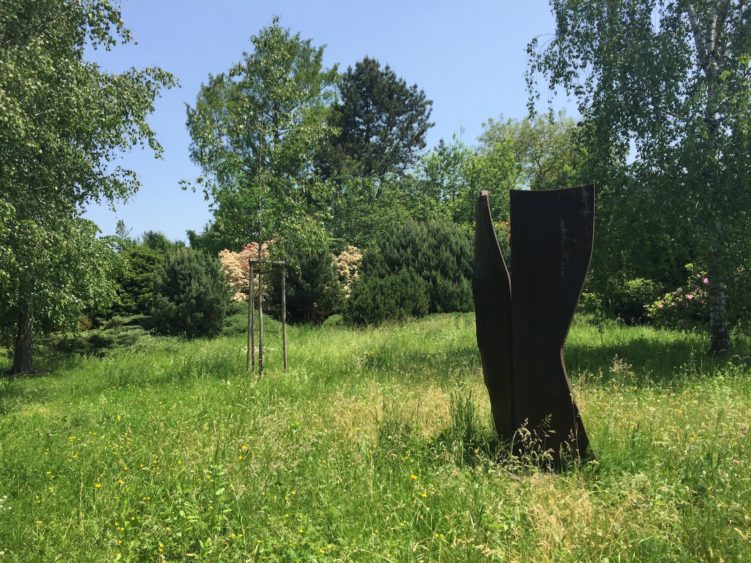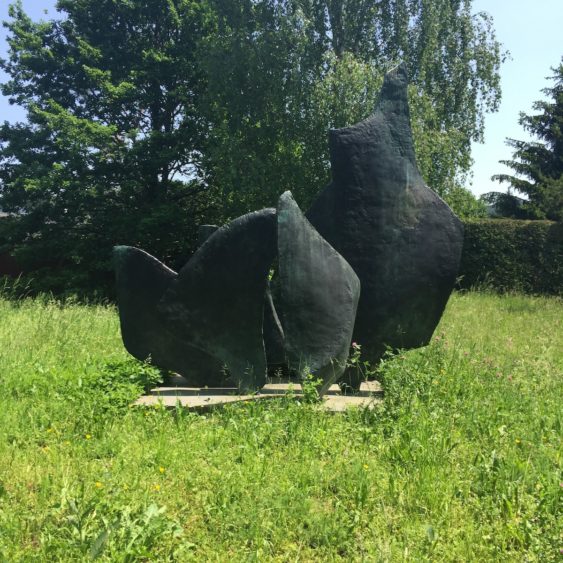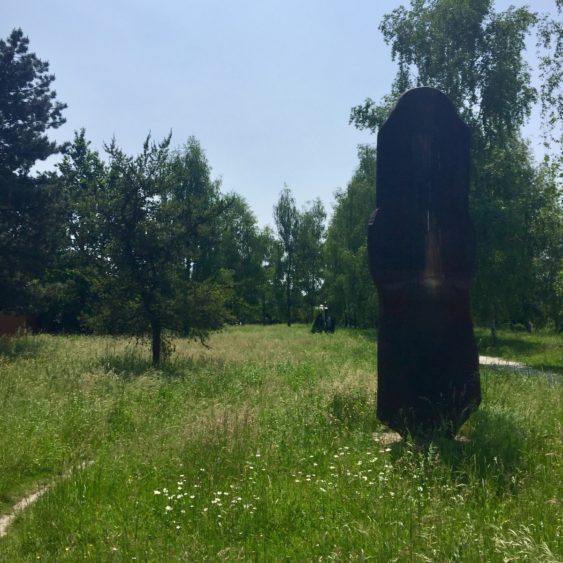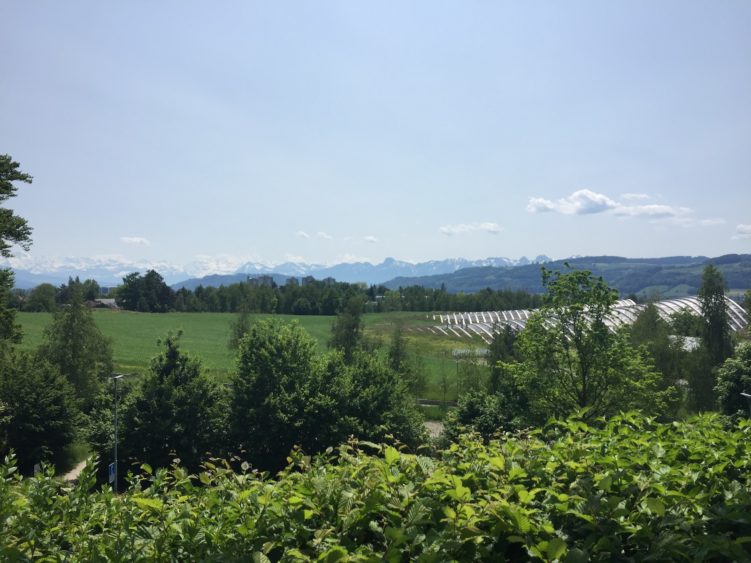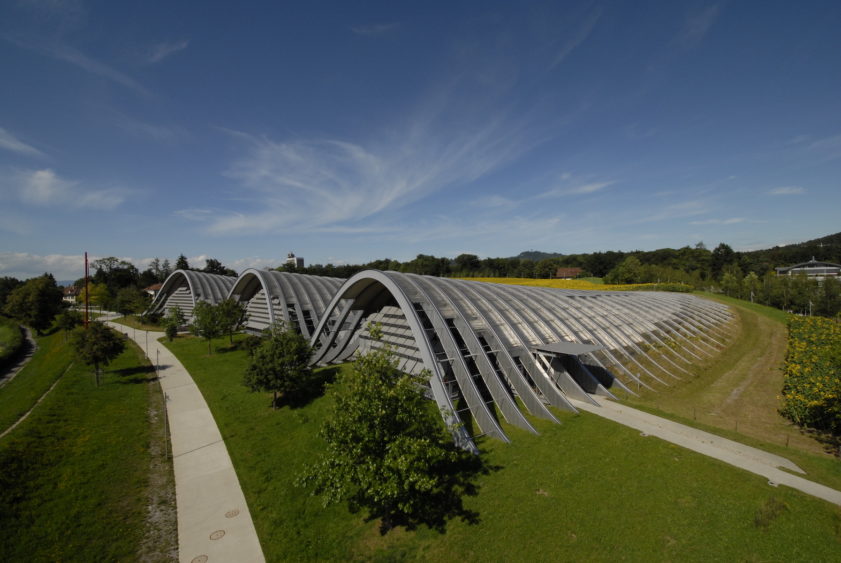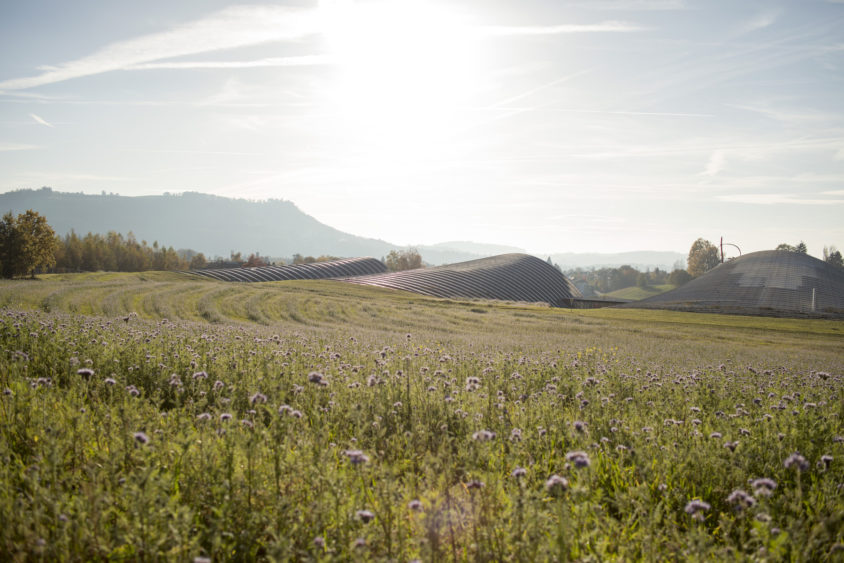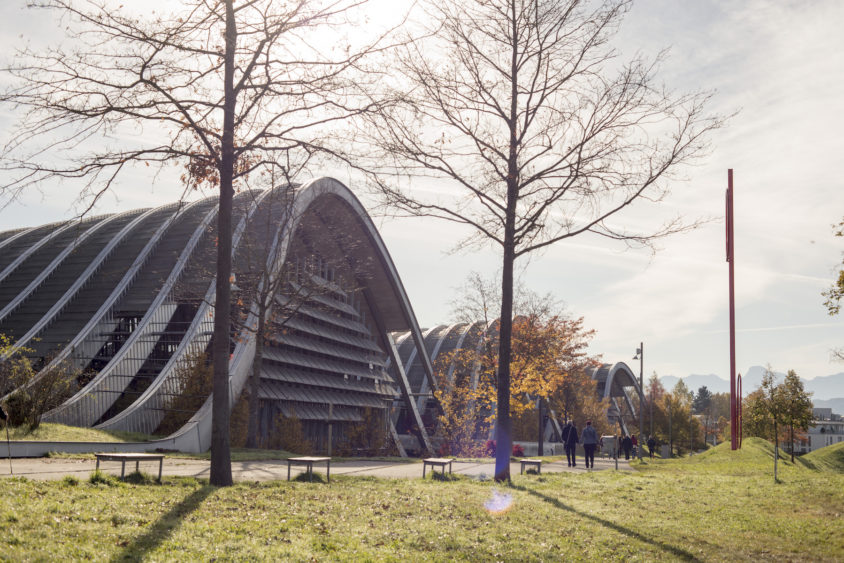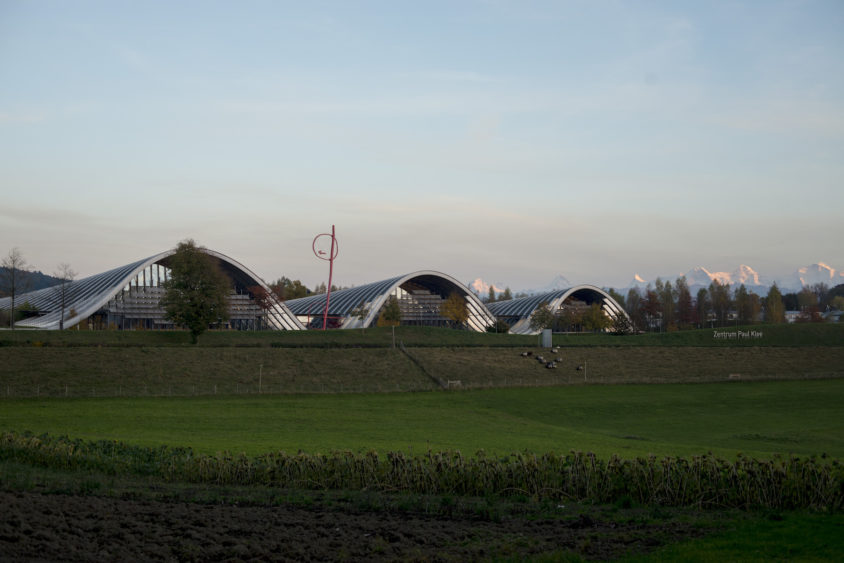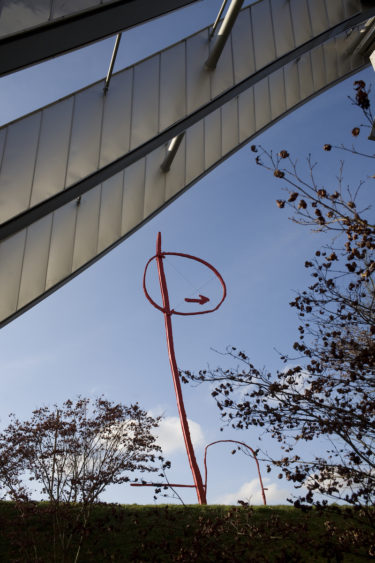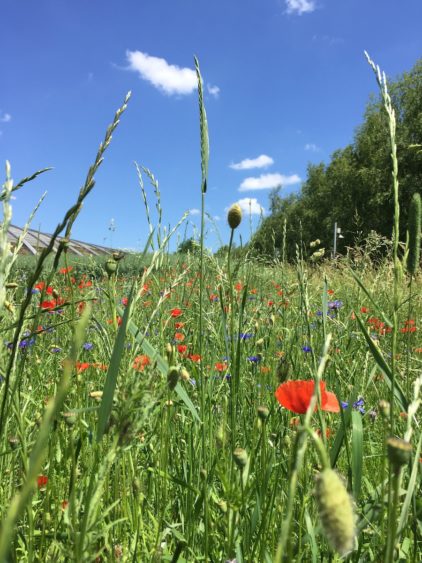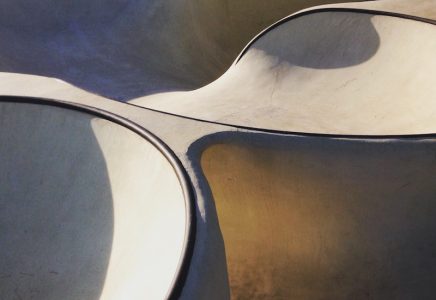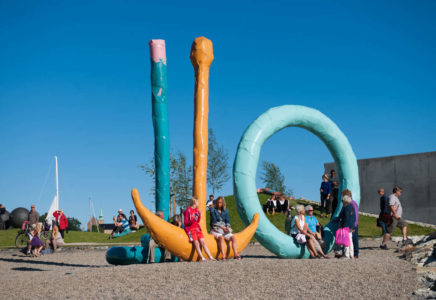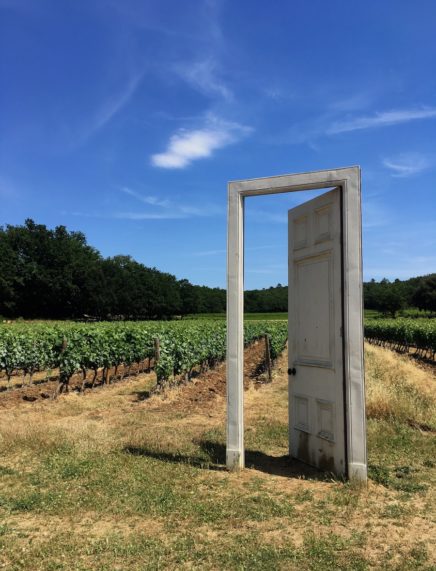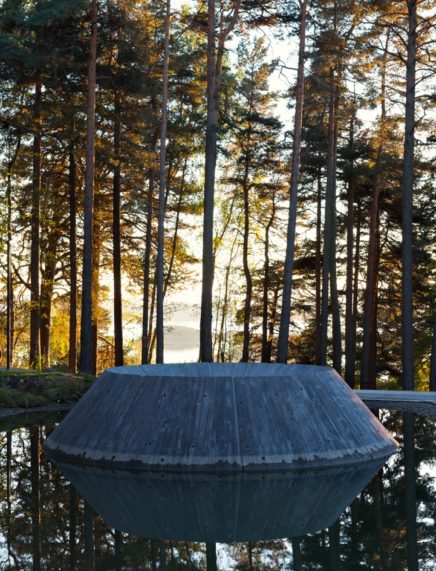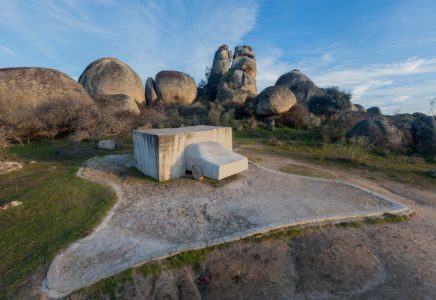Postcard from the Zentrum Paul Klee
It is a bit of a magical place, at the end of line 12, right past the highway. A thrilling place that grips you in a delightful way, without brutality or violence but gently, into its soft shimmering curves.
It is an art center in the shape of a wave that blends into a landscape that forms around it a sinuous, verdant, fluffy backdrop.
Walking through the paths of the Zentrum Paul Klee of Bern is escaping, within ten minutes, the bustling downtown of a capital city and reconnecting with simple shapes, a bucolic profusion of colors and bird songs.
The snow-capped mountain range, great sacred figures of the Bernese Oberland, creates a gorgeous backdrop when the weather lets shadows and light play on the mountaintops. So far, so close.
Once off the red bus, a few steps lead to Renzo Piano’s ingenious and sensitive architecture. This is the fourth museum imagined by the architect. Inaugurated in 2005, this is one is monographic: three steel waves, welded by hand, partially covered with rippling vegetation and discreetly carved into the surface of the hills that surround the city. They offer themselves to my gaze that glides and rejoices in discovering this soothing continuity of shapes and surfaces.
The only thing that stands out is a monumental sculpture, also red, designed by Piano and inspired by a watercolor painted by Klee in 1937: Labiler Wegweiser (unstable panel) stands as a frail banner exposed to the wind, and recounts the sensitive and harmonious balance of this site.
And yet, the Zentrum Paul Klee hosts two exhibition spaces, a children’s museum, a library and an auditorium, all skillfully hidden underground. Each one of the three waves are respectively dedicated at the head to administration, at the heart to the collections and exhibitions, and at the hand to spaces for music, which was dear to the painter, mediation and relaxation.
After over two hours spent within these walls, I feel completely connected to what I am thinking, what I am feeling, but also to what my fingers now want me to transform, following the flow of inspiration that overtakes me.
The architectural gesture is moving, appealing, and greets you in a series of large, bright and uncluttered spaces to maintain a constant dialogue with the surrounding nature. Bees, on the other side of the window, are not fooled. The colorful sculptures/modules of Swiss American artists Lang/Baumann harmoniously blend into the dynamic of the spaces. Piano wanted to create a single image out of the hill, “a museum of silent nature”. He succeeded.
Beyond the landscaped basin, a sculpture garden hosting the Martha Müller-Lüthi collection reminds us of Klee’s love of nature. On each side of an alley of birch trees, six discreet works left to the caresses of tall grass and nettle also interact with the landscape. Alicia Penalba’s bronzes and Oscar Wiggli or Yves Dana’s Corten steel pieces all contribute to the atmosphere of the site, conducive to contemplation, to openness to the world.
Globally designed as a landscape sculpture, the cultural center radiates over the whole “Schöngrün” site, appropriately named beautiful greenery. Close by, the strangely welcoming Schlosshalden cemetery hosts, on top of a spiraled hillock, “Luft-Station”, inspired by the title of one of Klee’s artwork, and offers a stunning view of the connections between the museum and its surroundings. On this warm and peaceful June morning, students come here to draw and work.
Rarely have I had the opportunity to look at the grave of a painter and his spouse and feel so closely connected to the majestic site dedicated to him. Rarely have I felt so serene on a burial ground.
This summer, the cultural center offers two exhibitions: one is dedicated to Klee and his close and many friends (Macke, Moilliet, Delaunay, Kandinsky, Picasso, Arp and others), and the other, “Ekstase”, studies through paintings, photographs, videos and other media, the vertiginous paths of this state that is conducive to creation.
Yes, there is indeed magic in Paul Klee’s work and in this breathing site that hosts the most important collection of this artist, thinker and poet’s works.
I feel like I have brushed against it this morning, and absorbed it: just like the colors of Kairouan in Tunisia touched Klee and comforted him in his identity as a painter for the rest of his fascinating career.
Zentrum Paul Klee Berne
Tue – Sun 10h – 17h
